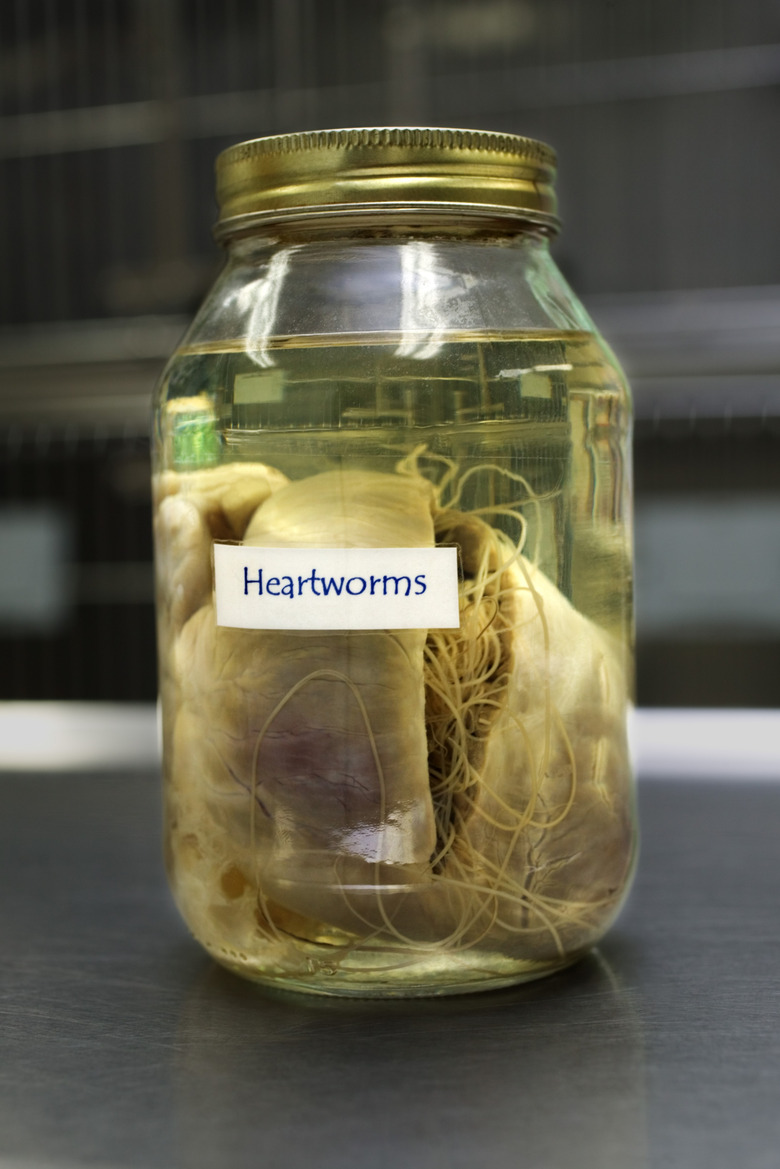Facts About Symbiotic Relationships
Symbiotic relationships occur when two organisms interact in a way that benefits one or both of them. Biologists classify symbiotic relationships as either facultative or obligate. In facultative relationships, the organisms can live without each other. In obligate relationships, one or both of the organisms would die if they were separated.
Mutualism
Mutualism
Mutualism occurs when both lifeforms in the relationship benefit. For example, humans give dogs food and shelter while the dog provides companionship and protection. This is an facultative relationship since humans and dogs can live without each other. Mycorrhizae, meaning "fungus-root," is a form of mutualism that happens in roughly 80 percent of plants. In mycorrhizae, a fungus in the soil attaches itself to a plant's roots with threads called hyphae. The hyphae bring essential nutrients to the plant while the plant provides the fungi with carbohydrates. This benefits plants in low-nutrient environments by helping them access essential minerals such as phosphorous. It benefits the fungus because fungi don't produce their own food supply.
Commensalism
Commensalism
Commensalism occurs when one organism benefits and another organism, or host, isn't harmed or helped in any way. For example, small relatives of the jellyfish called hydroids, travel to their feeding grounds by sharing snail shells with hermit crabs. The crabs are unaffected because the hydroids and the crabs eat different foods. One form of commensalism, called inquilinism, occurs when one organism uses another species, or another species' habitat without harming the host species. For example some mosquitoes protect themselves by living and breeding in the fluid inside pitcher plants.
Parasitism
Parasitism
Parasitism occurs when one organism benefits and the host suffers. Unlike predators, parasites don't kill their hosts. Instead, parasites acquire food or shelter from their hosts over a long period of time. However, some parasites can cause illness and even death when they remain too long. A wide variety of worms, insects, protozoa, viruses and bacteria exist as parasites. Ectoparasites such as ticks and fleas live outside their hosts while endoparasites such as hookworms and tapeworms live inside the host. Some insectslay their eggs in the shoots of plants. When the eggs hatch, the larvae feed and develop inside a tumor-like growth on the plant called a gall. This is an obligate relationship for the insect, without it they couldn't reproduce. However, it is a facultative relationship for the plant which is better off without the parasite.
Other Examples
Other Examples
There are many examples of symbiotic relationships throughout the natural world. Hoofed animals such as cows eat lots of plants high in cellulose fiber although their bodies don't produce the enzymes for digesting cellulose. However, their digestive tracts contain symbiotic microorganisms that break down the cellulose into smaller pieces that the animals can digest. Similarly, human beings depend on bacteria in their digestive tracts to break down food waste. Underwater, certain shrimp and fish species feed off the parasites found on other fish. Even the relationship between humans and their farm animals can be seen as symbiotic. Farmers feed, shelter and protect their animals and in return the animals provide food and raw material for clothing.
References
- "Science of Everyday Things"; Symbiosis; 2002
- "Biology"; Symbiosis; David C. Harnett; 2002
- "Animal Sciences"; Parasitism; Jennifer Yeh; 2002
- "A Dictionary of Ecology"; Parasitism; Michael Allaby; 2004
- "A Dictionary of Ecology"; Commensalism; Michael Allaby; 2004
- "A Dictionary of Biology"; Inquilinism; 2004
Cite This Article
MLA
III, Frank B. Chavez. "Facts About Symbiotic Relationships" sciencing.com, https://www.sciencing.com/symbiotic-relationships-8709702/. 24 April 2017.
APA
III, Frank B. Chavez. (2017, April 24). Facts About Symbiotic Relationships. sciencing.com. Retrieved from https://www.sciencing.com/symbiotic-relationships-8709702/
Chicago
III, Frank B. Chavez. Facts About Symbiotic Relationships last modified March 24, 2022. https://www.sciencing.com/symbiotic-relationships-8709702/
